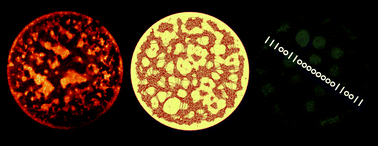Modelling and confocal microscopy of biopolymer mixtures in confined geometries†
Abstract
The morphology of a phase separating and gelling

* Corresponding authors
a SIK, The Swedish Institute for Food and Biotechnology, Box 5401, Gothenburg, Sweden
b Department of Chemical and Biological Engineering, Chalmers University of Technology, Gothenburg
c
Polymer Physics, ETH Zürich, Department of Materials, Wolfgang-Pauli-Str. 10, Zürich, Switzerland
E-mail:
mk@mat.ethz.ch
The morphology of a phase separating and gelling

 Please wait while we load your content...
Something went wrong. Try again?
Please wait while we load your content...
Something went wrong. Try again?
S. Fransson, O. Peleg, N. Lorén, A. Hermansson and M. Kröger, Soft Matter, 2010, 6, 2713 DOI: 10.1039/B926562G
To request permission to reproduce material from this article, please go to the Copyright Clearance Center request page.
If you are an author contributing to an RSC publication, you do not need to request permission provided correct acknowledgement is given.
If you are the author of this article, you do not need to request permission to reproduce figures and diagrams provided correct acknowledgement is given. If you want to reproduce the whole article in a third-party publication (excluding your thesis/dissertation for which permission is not required) please go to the Copyright Clearance Center request page.
Read more about how to correctly acknowledge RSC content.
 Fetching data from CrossRef.
Fetching data from CrossRef.
This may take some time to load.
Loading related content
